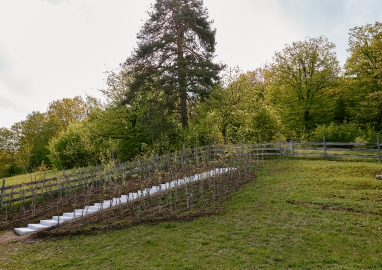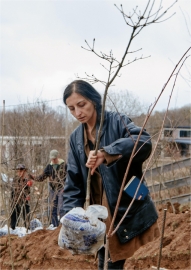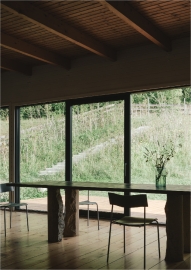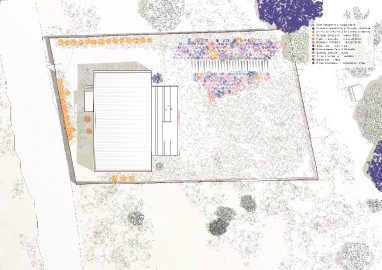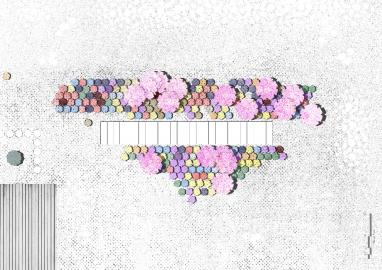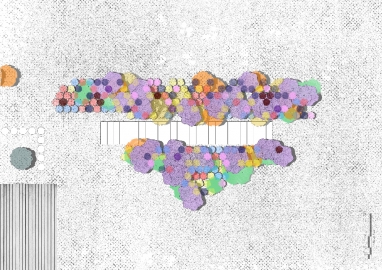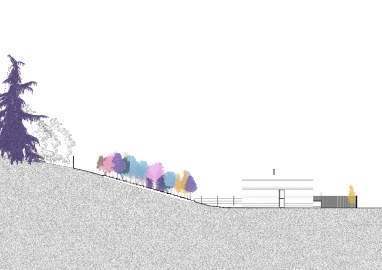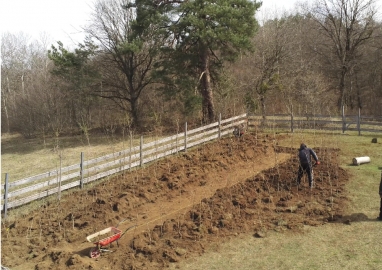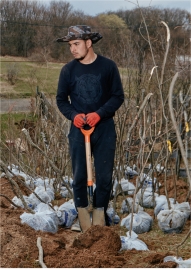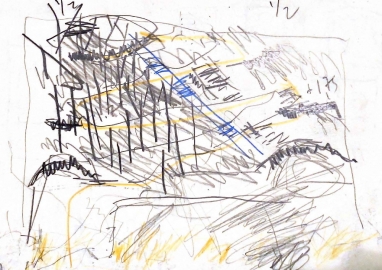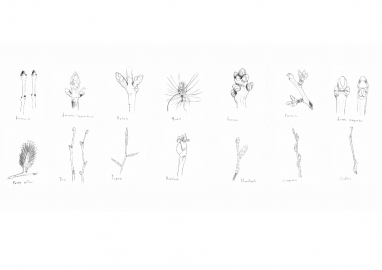Betania Forest Garden
The Betania Forest Garden is an ongoing work of adaptive forestry and meadow management practices. It includes a forest planting, stair, and meadow that bridges the home to the surrounding Kojori forestlands and the greater Vere River Valley.
The garden is in the village of Betania, in the Korjori climate resort area of the lesser Caucasus mountains near the capital of Georgia, Tbilisi. The family desired a landscape of light, shadow, and seasonal change. For their young daughter, they wanted a safe place where she could learn about the natural environment by interacting with the landscape and its species as she grows. The garden includes three elements: a simple concrete stair, a forest patch planted with the “Miyawaki Method” of 13 species of saplings, and a meadow. By distilling the garden into these three spatial, the species mix, growth, and texture variations are made legible over seasons and years. The garden composition, with complex vertical layering, provides habitat for birds and pollinators that animate the space.
Development is intensifying in Tbilisi’s peri-urban fringes. Biodiversity and soil health is lost as homeowners increase paved areas and substitute turf lawns with a limited palette of imported specimen trees and shrubs requiring extensive maintenance. The project demonstrates a biodiverse, affordable, and aesthetic alternative to these practices and materials. It reaches beyond its enclosure through economic, ecological, social, and artistic means. The work aims to spark demand for endemic forest species, the growth of local nurseries and supply chains, and minimal maintenance methods that increase herbaceous biodiversity and enhance soil health. The project foregrounds species behavior and facilitates local horticultural knowledge through on-site learning and ongoing documentation. Local filmmakers and photographers document the garden's design, installation, and evolution. The garden is now a popular setting for media productions and events that promote the garden’s aesthetic and environmental principles in the capital region. Local organizations hold retreats focused on climate change and sustainability at the residence.
The planting includes 300 trees of 12 species sourced from a nearby nursery where saplings are grown from locally-gathered seed stocks. The forest patch follows the Miyawaki Afforestation Method, which accelerates forest growth through a dense planting of native species. The method is adapted to add spatial and textural definition that frames atmospheric phenomena throughout the day and seasons.
The stair divides the forest patch, increasing the surface area of the forest where woody edge species thrive. Traces of former cow paths subtly figure the meadow slope and connect the garden to the landscape beyond. A varied tapestry of wildflowers and grasses emerges with iterative irrigation and mowing.
As the forest matures, some species will be pollarded or coppiced to diversify the texture and layering of the forest. This “chop and drop” method accelerates the development of the organic horizon in the soil which welcomes the fungal communities of the existing forest.

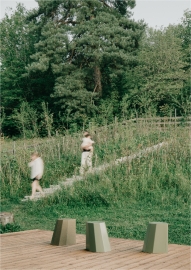
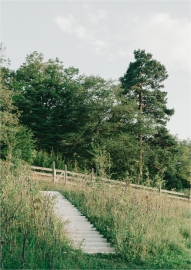 © Grigory Sokolinsky
© Grigory Sokolinsky
